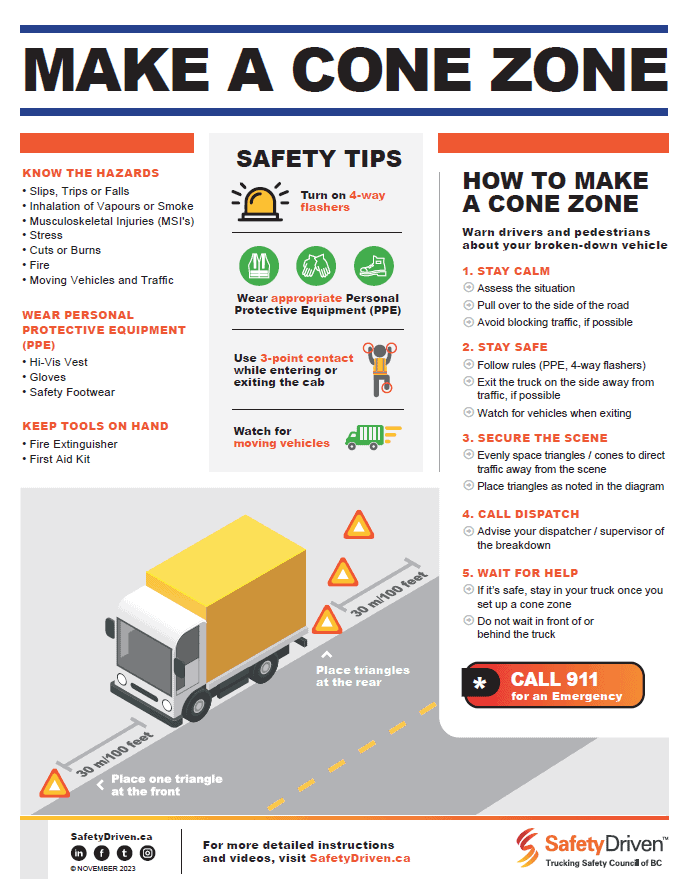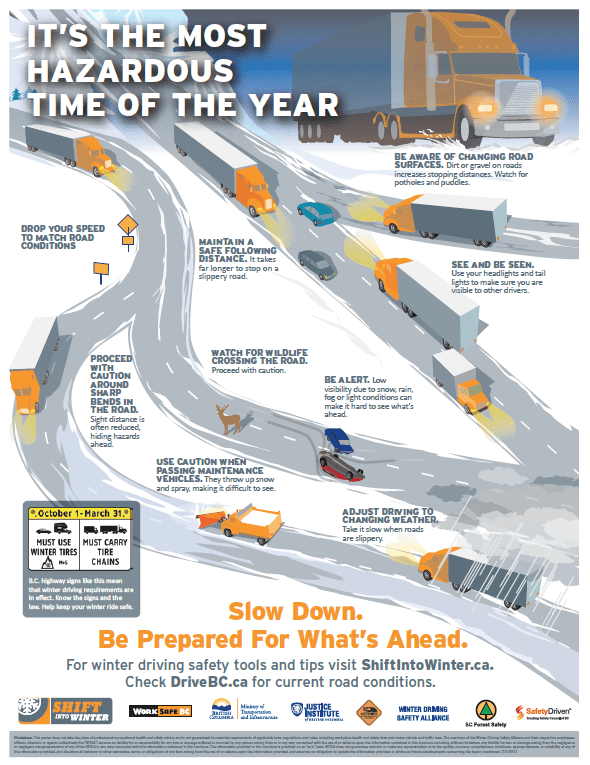
Before You Shift into Winter – Operational Changes for Carriers
Cooler mornings signal the changing season. They also mean carriers and their teams will need to change the way they work each day.
During the summer months, water cooler talk about seasonal driving is more about heat and less about mud at job sites or slippery road conditions. In autumn, shorter days mean darker mornings and the likelihood of hazards such as frost, ice, or mud in the yard or on equipment and trailer decks. Before you know it, winter will be here and it will be past the time for preparing.
An old saying tells us, “If you fail to prepare you are preparing to fail.” Carriers need to prepare for autumn and how it will impact their business. The most important message a carrier can share with their drivers is that their safety is the top priority. It is important that carriers make operational changes to ensure drivers are protected so they can continue to do a good job.
Little things can make a big difference. Carriers and drivers should look ahead—literally. With darker mornings and evenings, the work site may look different in autumn than summer. Inspect areas where hazards could occur to identify risks and create a plan to correct them. If there are noticeable dark areas in the yard where trucks will be loading and unloading, consider installing a light. Other potential hazards to fix include tripping hazards, such as holes in the ground or pieces of leftover dunnage. Take the time to correct hazards while the weather is still good. It’s an investment in safety.
Autumn also means the change to standard time and some short-term side effects. The time change is a bit easier in the fall than in the spring, but studies have found that people also experience a physical effect when we turn the clocks back. You may feel a bit sluggish for a week or so, possibly because disrupting the sleep cycle causes hormone levels to change. That listless feeling can make people lose their focus; statistics show an increase in pedestrian fatalities during the first few weeks of the return to standard time. Some researchers suggest that drivers and pedestrians, after months with more light during their morning commute, don’t adjust their behaviour right away when they have less light. Traffic accidents are more likely to happen in the dark.
The autumn time change can also cause depression or make it worse, a huge hazard for professional drivers. And, according to a Finnish study, the chance of having a stroke increases about 8% over the first two days after we switch from daylight saving time. This is because sleep protects us against stroke and when we mess with our sleep, we disrupt that protection.
Regardless of which time zone you’re operating in, time impacts a carrier’s operation. Routine tasks, such as loading a trailer, can take longer to complete safely when you’re not at your best. It’s always important that carriers ensure drivers are able to complete their tasks safely by supporting driver training.
One important task that may come up in the fall (in certain regions) is putting on tire chains. Drivers need to know how to chain up and how many chains they need for their vehicle(s). The best time to learn, or review how to put tire chains on, is before you need to do it. In British Columbia, between October 1 and April 30, vehicles registered over 11,794 KG must carry tire chains. Note that these must be steel chains on most major highways.
Whatever the time, don’t rush. Do the job safely, even if it takes a few extra minutes. Operational change required to meet changing seasons is a good topic for a safety meeting or toolbox talk.
Latest Resources
Make a Cone Zone
Dowload this poster for tips on how to make a safe cone zone.Winter Hazards Poster
Drivers need to recognize winter hazards. Share this poster to remind drivers how to ...

